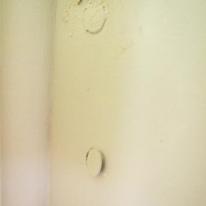Plasterboard – nail popping
Listed under: Interior, plaster and fibrous plaster, plasterboard, earthquakes, linings, fixings and hardware
Cause
Timber shrinkage
Repair
-
timber framing must be sufficiently dry when plasterboard is installed. Lining manufacturers typically require a moisture content of 18% or less, or 12% where heat pumps/central heating/air conditioning systems will be installed
-
if nail popping has happened as the result of timber shrinkage, before taking action wait until after the shrinkage is likely to have finished (for example, at the end of a heating season)
-
with popped nails, a nail punch can drive them below the surface, followed by redecorating. With screws, a new screw can be fixed 50 mm from the popped screw (which should be driven below the surface), again followed by redecorating
Cause
Plasterboard is not fixed tightly to the framing
Repair
-
the back of the lining must sit flush and tight against the face of the framing. Plasterboard should ideally be fixed with screws rather than nails
-
with popped nails, a nail punch can drive them below the surface, followed by redecorating. With screws, a new screw can be fixed 50 mm from the popped screw (which should be driven below the surface), again followed by redecorating
Cause
Fixing was through a daub of adhesive which has shrunk and pulled the lining in
Repair
-
fixings should not be used close to adhesive – lining manufacturers say there should be a minimum 200 mm distance between screw fastenings and adhesive. Do not used adhesive where it should not be used
-
with popped nails, a nail punch can drive them below the surface, followed by redecorating. With screws, a new screw can be fixed 50 mm from the popped screw (which should be driven below the surface), again followed by redecorating
Cause
Building movement
Repair
- with popped nails, a nail punch can drive them below the surface, followed by redecorating. With screws, a new screw can be fixed 50 mm from the popped screw (which should be driven below the surface), again followed by redecorating




